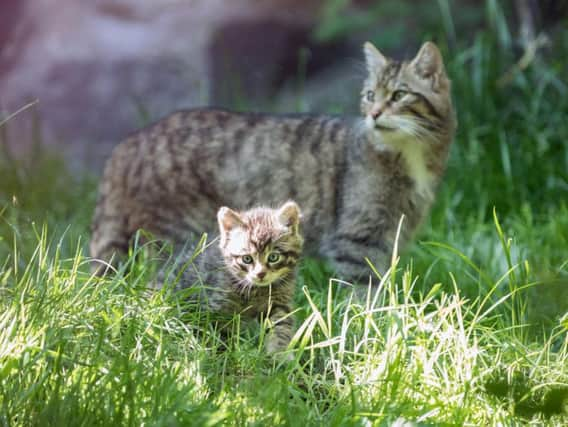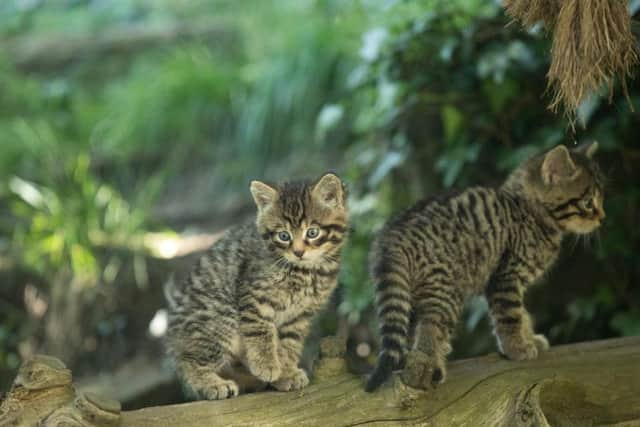Scottish wildcats to be reintroduced in the Highlands to stave off extinction


The iconic Scottish wildcat, the UK's only native feline, has been present since the last ice age.
But recent studies suggest there are too few genuine wildcats left in the wild for the species to survive.
Advertisement
Hide AdAdvertisement
Hide AdThe situation has come about as a result of generations of cross-breeding with domestic cats.


The new wildcat population will come from animals bred in captivity from Scottish-caught specimens and pure-bred cats from the continent.
Specialist reintroduction centre
The cats will be raised at a new specialist centre in the Highlands that is being set up as part of the multi-million-pound Saving Wildcats recovery project.
Locations in the Cairngorms are being assessed for suitability as release sites.
The initiative has been given the go-ahead thanks to a £3.2 million grant from the European Union, with the first cats expected to be released in 2022.
The reintroduction centre will be based at the Highland Wildlife Park in Kincraig, near Aviemore, which is already home to a captive breeding programme for the species.
Helen Senn, head of conservation and science programmes at the Royal Zoological Society of Scotland (RZSS) charity, which runs the wildlife park, said: “Wildcats are on the brink of extinction in Scotland but it’s not too late.
“With funding in place, it is tremendously exciting to begin the UK’s first wildcat release project and bring together all the necessary resources and expertise to make it happen.
Cairngorms release sites
Advertisement
Hide AdAdvertisement
Hide Ad“Using wildcats from the existing captive population, as well as cats from Europe to boost the gene pool, the reintroduction centre will provide a sustainable source of wildcats for years to come.
“The Cairngorms have historically been a key part of the wildcat range and we are working closely with the partners to understand which is our preferred first release site.
“Further wildcat releases may also take place in other strategically important locations across Scotland, with the potential to support well-planned future efforts in the rest of the UK.”
“Fortunately in Scotland we have a fantastic group of scientists and specialists who are working together with the Scottish Government, the Royal Zoological Society of Scotland and others to explore all options to save the species here. Today is an important step towards the conservation of the ‘Highland Tiger’ in Scotland, but there’s a lot of work still to be done.”
Andrew Kitchener, chair of national rescue project Scottish Wildcat Action, said: “The Scottish Wildcat Action partnership is delighted with this news and it is testament to the strong working partnership formed under Scottish Wildcat Action that we have been able to secure funding for this next critical phase of work.”
Hybridisation
A report published in February by the International Union for Conservation of Nature’s cat specialist group concluded there is no longer a viable wildcat population living wild in Scotland, with hybridisation with domestic and feral cats the major threat to their survival. This means the extinction of the species is highly likely without wildcat releases.
Over the next six years, RZSS will lead the Saving Wildcats project which will build on the work of the Scottish Wildcat Action partnership, supported by a £3.2 million EU LIFE grant and co-funding from the Garfield Western Foundation, the National Trust for Scotland, the People’s Trust for Endangered Species and the European Nature Trust.
The RZSS will work with Scottish Natural Heritage, Cairngorms National Park Authority and Forestry and Land Scotland, as well as European partners Norden’s Ark from Sweden and Spain’s Junta De Andalucía, which have led the successful recovery of the Iberian lynx.
